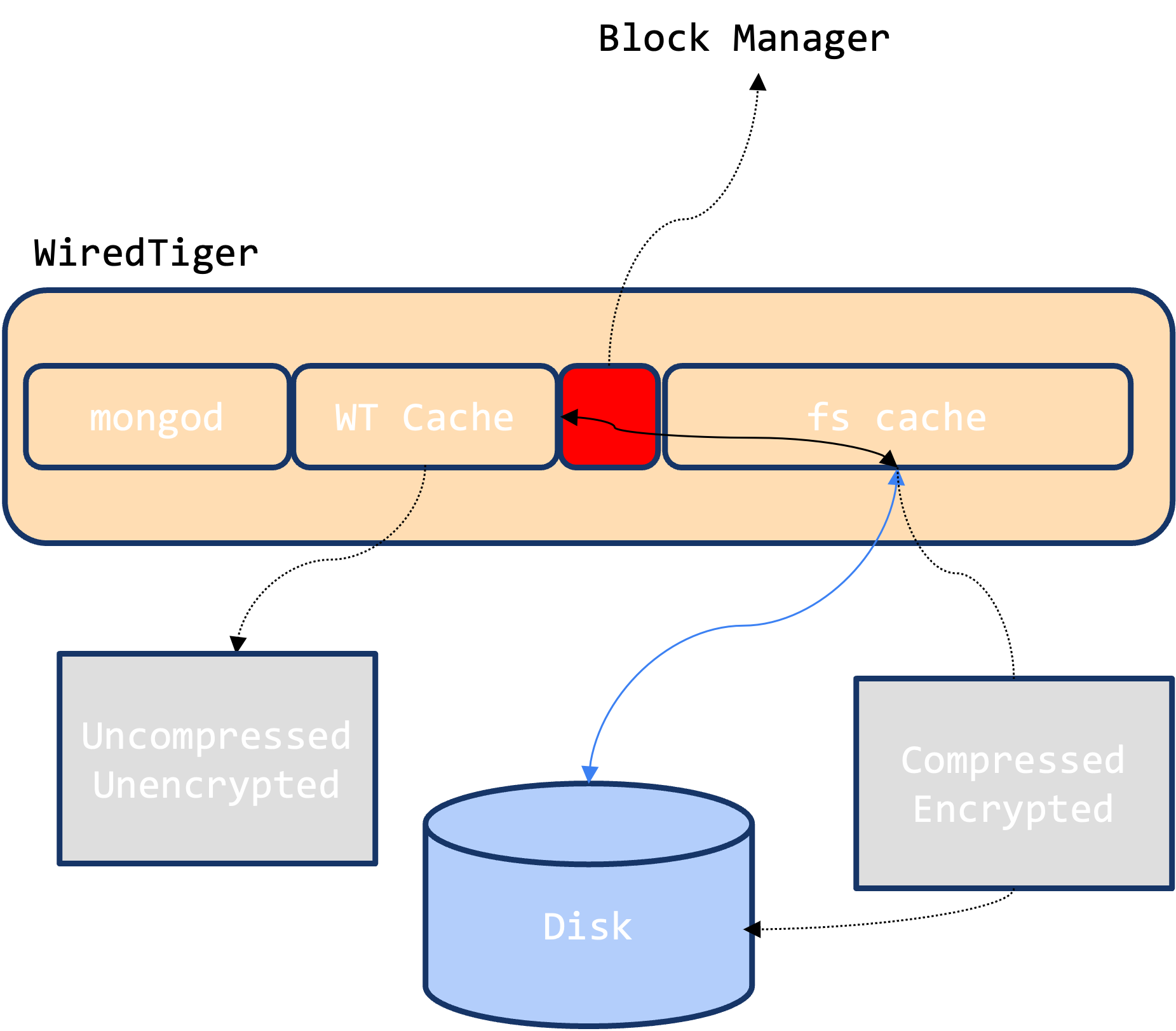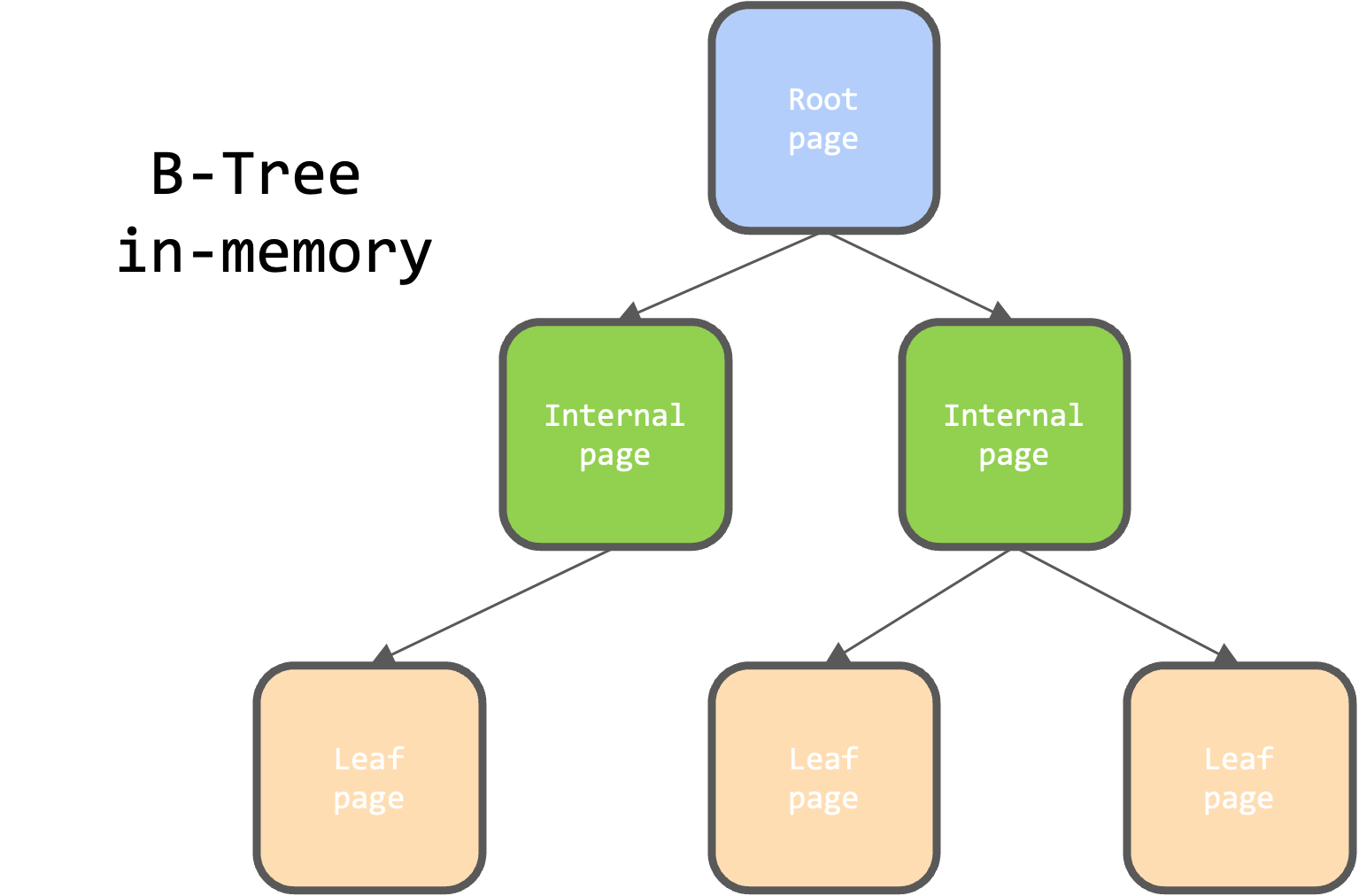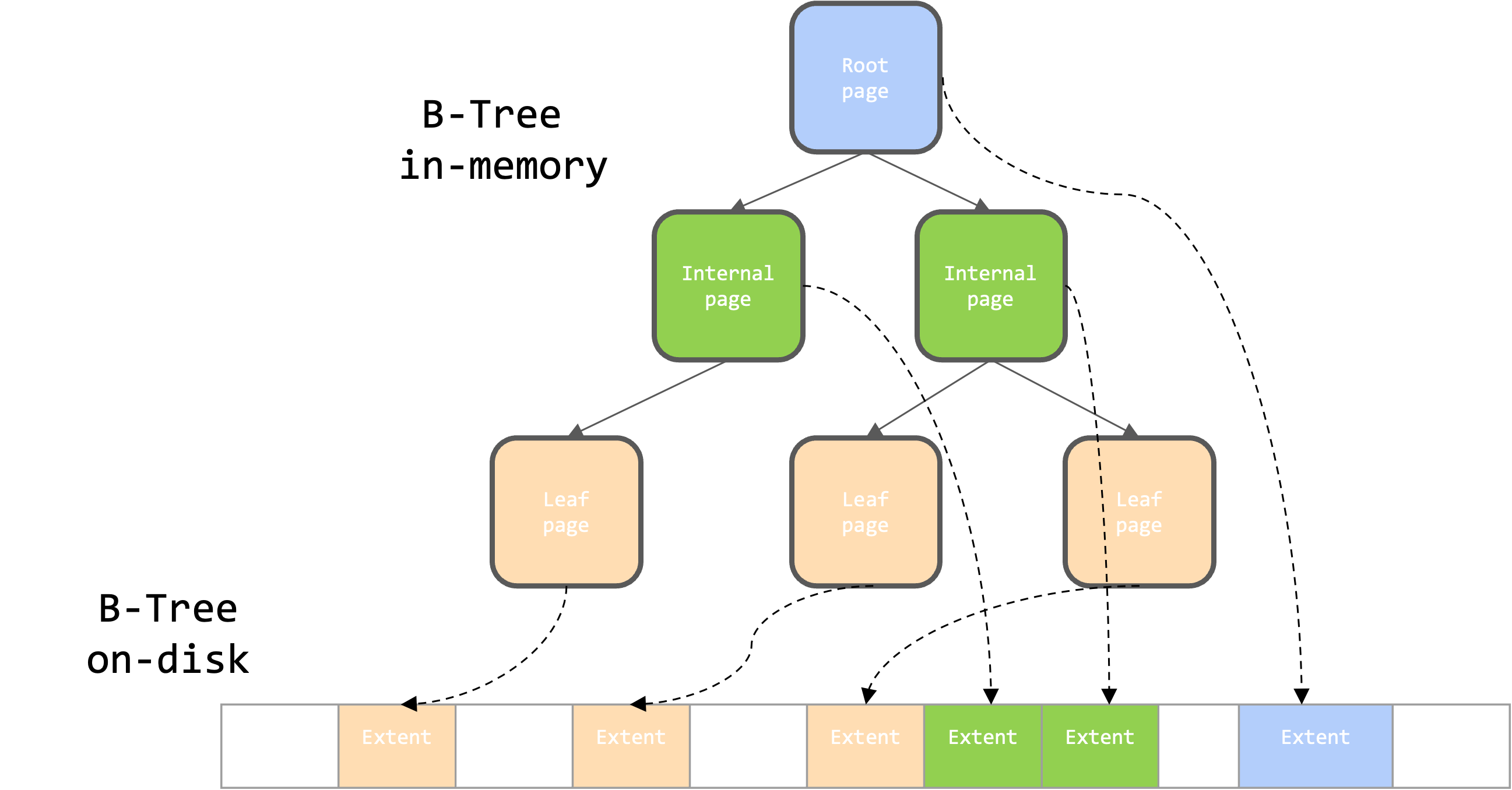3. BLOCK MANAGER

WiredTiger’s storage architecture is optimized for multi-core CPUs and large memory. It consists of two key components: in-memory cache and disk block manager. Here’s a brief overview:
- In-Memory Cache: Implemented using a B-tree structure with hazard pointers. B-tree nodes are organized at the page level, and the cache eviction policy follows the LRU (Least Recently Used) algorithm.
- Disk Block Manager: Handles raw block I/O operations, including:
- Reading and Writing Pages
- Checksum/Verification
- Space Management
- Compression
- Checkpoints
In-Memory Page Format

WiredTiger represents database tables using a B-Tree data structure (WT_BTREE in btree.h). The B-tree is composed of nodes, which are page structures:
- Root and Internal Pages: Store keys and references to other pages.
- Leaf Pages: Store keys and values. As users insert data, records are kept in sorted order. When a page reaches its limit, it splits, causing the B-tree to expand.
On-Disk Page Format

Extents represent ranges of contiguous blocks on disk.

This structure lays the foundation for how WiredTiger manages data both in memory and on disk. In the subsequent sections, we will delve deeper into how the block manager operates within this structure, including how it handles I/O operations, manages space, and ensures data integrity through checkpoints and other mechanisms.